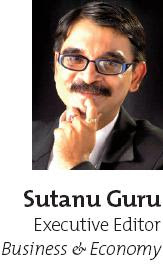Plastic  may not be good for the environment but it’s surely driving the money market and how! With 59% consumers worldwide nodding with approval to credit cards as a primary means of payment, one can well expect the bonanza of profits that credit card companies are enjoying of late.
may not be good for the environment but it’s surely driving the money market and how! With 59% consumers worldwide nodding with approval to credit cards as a primary means of payment, one can well expect the bonanza of profits that credit card companies are enjoying of late.
Indeed, both MasterCard and Visa are having a ball. An unprecedented gain in profits of 70% for MasterCard in the current quarter has enthralled shareholders. Robert Selander, the company’s president and CEO, stated, “These results continue to demonstrate the strength of our business model and growth in electronic forms of payment.” The boost in this hike comes more from markets like India, China and Brazil.
The two companies have also built a phenomenal branding strength over the years. Talking about branding power of Visa, Michael Beindorff, Executive VP, Visa USA, said, “Rather than promoting their own brand name, banks want to build their house on the foundation of Visa, which is already so powerful and strong”. The positive traits attached to the brand name Visa, are confidence, comfort, high acceptance and reliability. However, with a decline of 56 points in market share for 2006, Visa (market share of 60.29%) announced the launch of “Life Takes Visa” brand campaign (for the first time in 20 years) and talks about evolution of Visa from a top credit card company to leader in electronic payments.
For Complete IIPM Article, Click on IIPM Article
Source : IIPM Editorial, 2007
An IIPM and Professor Arindam Chaudhuri (Renowned Management Guru and Economist) Initiative
 may not be good for the environment but it’s surely driving the money market and how! With 59% consumers worldwide nodding with approval to credit cards as a primary means of payment, one can well expect the bonanza of profits that credit card companies are enjoying of late.
may not be good for the environment but it’s surely driving the money market and how! With 59% consumers worldwide nodding with approval to credit cards as a primary means of payment, one can well expect the bonanza of profits that credit card companies are enjoying of late.Indeed, both MasterCard and Visa are having a ball. An unprecedented gain in profits of 70% for MasterCard in the current quarter has enthralled shareholders. Robert Selander, the company’s president and CEO, stated, “These results continue to demonstrate the strength of our business model and growth in electronic forms of payment.” The boost in this hike comes more from markets like India, China and Brazil.
The two companies have also built a phenomenal branding strength over the years. Talking about branding power of Visa, Michael Beindorff, Executive VP, Visa USA, said, “Rather than promoting their own brand name, banks want to build their house on the foundation of Visa, which is already so powerful and strong”. The positive traits attached to the brand name Visa, are confidence, comfort, high acceptance and reliability. However, with a decline of 56 points in market share for 2006, Visa (market share of 60.29%) announced the launch of “Life Takes Visa” brand campaign (for the first time in 20 years) and talks about evolution of Visa from a top credit card company to leader in electronic payments.
For Complete IIPM Article, Click on IIPM Article
Source : IIPM Editorial, 2007
An IIPM and Professor Arindam Chaudhuri (Renowned Management Guru and Economist) Initiative

